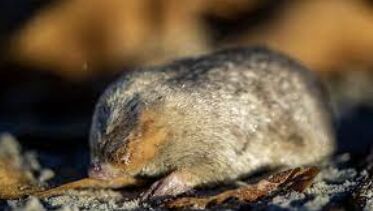Long-Lost Species Rediscovered: South African Researchers Shocked by Stunning Find of Mole Thought Extinct for 80 Years
Researchers in South Africa have rediscovered the De Winton's golden mole, a species thought to be extinct for over 80 years. This groundbreaking find brings hope to the world of conservation and highlights the importance of ongoing efforts to protect endangered wildlife.
In a remarkable discovery, researchers in South Africa have announced the rediscovery of a species of mole that was thought to be extinct for over 80 years. The De Winton's golden mole, characterized by its iridescent golden coat and unique ability to "swim through sand dunes," was found on a beach in Port Nolloth on the country's west coast. The team of researchers, consisting of experts from the Endangered Wildlife Trust and the University of Pretoria, stumbled upon the elusive creature while conducting a survey. The De Winton's golden mole is a small, blind burrower with exceptional hearing abilities.
They found what they thought was an extinct mole on beach in South Africa DeWinton’s golden mole is still alive! Little ray of sunshine for your day 😊
— Diana Collins☮️🟧 (@DianaPOMoon) November 30, 2023
It primarily feeds on insects and had been lost to science since 1936. The species was added to the "most wanted lost species list" by the Re:wild conservation group, which aims to track down and protect endangered wildlife. This groundbreaking rediscovery brings hope to the world of conservation and highlights the importance of continuous efforts to locate and preserve threatened species.
The journey to rediscovering the De Winton's golden mole was filled with obstacles. Researchers embarked on a three-year endeavor, starting with their first trip to the west coast of South Africa, where the species was known to reside exclusively in the Port Nolloth area. The mole's elusive nature and ability to leave few signs of its presence made the search incredibly challenging. However, a sniffer dog helped the team locate traces of tunnels, leading them to the golden mole's whereabouts. To confirm that the mole was indeed a De Winton's, the researchers relied on environmental DNA sampling. By collecting DNA left behind in skin cells, hair, and bodily excretions, they hoped to establish a match with a DNA sample from decades ago. Their patience paid off in 2022 when a DNA sample of a De Winton's golden mole from a South African museum became available for comparison.
The DNA sequences were a perfect match, affirming the rediscovery of this long-lost species. Samantha Mynhardt, one of the researchers involved in the project, revealed that the team had faced skepticism and doubts along the way. However, their perseverance and determination paid off when the De Winton's golden mole was confirmed and photographed in Port Nolloth. Moreover, signs of other populations in the area have been observed since 2021, hinting at a potentially thriving population of these elusive creatures.
Esther Matthew, a senior field officer with the Endangered Wildlife Trust, described the project as both exciting and challenging. The team's enthusiasm and innovative ideas played a significant role in the successful survey of up to 18 kilometers (11 miles) of dune habitat in a single day. The rediscovery of the De Winton's golden mole not only emphasizes the importance of collaboration between researchers and conservation organizations but also serves as a reminder of the critical role that scientific research plays in saving endangered species. This remarkable rediscovery echoes similar success stories within the field of conservation.
Other species that were once presumed extinct, such as a salamander found in Guatemala in 2017 after a 42-year absence and an elephant shrew called the Somali sengi spotted in Djibouti in 2019, after over 50 years of no recorded sightings, have also been rediscovered. These triumphs provide hope for researchers and conservationists striving to protect and conserve our planet's biodiversity. The rediscovery of the De Winton's golden mole serves as a beacon of hope in an era of increasing biodiversity loss. It underscores the importance of preserving and understanding even the most elusive and obscure creatures. By shedding light on this hidden world beneath our feet, scientists hope to inspire further exploration and conservation efforts to protect the delicate balance of our planet's ecosystems.




